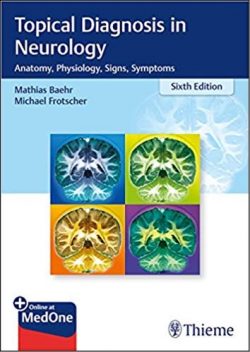This text addresses the current levels of evidence for management of a variety of critical parameters after severe traumatic brain injury (TBI), as well as providing the reader with practical approaches to care based upon existing evidence. A broad range of topics is included, ranging from specific critical care approaches to TBI to broader questions of prognostication and philosophies of treatment. Critical care topics include, for example: the type, timing, and safety of DVT prophylaxis; the choice of sedative agents in brain-injured patients; the practical application of multimodality neuromonitoring for prevention of secondary insults and injury; and the optimal treatment of dysautonomia. Broad approaches to treatment will include concepts such as: organization of trauma systems to maximize outcomes; end-of-life decision-making with incomplete data on prognosis; the use of medications to enhance recovery in the post-acute phase, and utilizing brain-machine interfaces for the restoration of function after injury. Written by experts in the field, each chapter is organized by proposal of a commonly encountered clinical question, addressing the current evidence for a variety of treatments, outlining the relevant questions on the topic that have not been adequately addressed in the literature, summarizing the options for treatment and the level of evidence upon which each is based, and finally proposing questions yet to be addressed in the literature. The text identifies in each chapter the ongoing questions for future research relevant to the topic at hand as well as providing a comprehensive educational reference for resident and fellowship training. Pre-Hospital Transportation and Optimal Utilization of Resources.- To Treat or Not to Treat: Early Withdrawal of Therapy and the Limits of Prognostic Ability.- Use of Multimodality Neuromonitoring in the Management of Traumatic Brain Injury.- Choice of Intracranial Pressure Monitoring Modality: Parenchymal Monitor vs. Parenchymal Monitor with Brain Tissue Oxygen Monitor vs. External Ventricular Drain.- Oxygen Management and Prevention of Cerebral Ischemia.- What is the Optimal Sedative Regimen in Severe Traumatic Brain Injury Patients?.- Fluid and Electrolyte Management: Hyperosmolar Euvolemia and the Use of Hypertonic Saline for Intracranial Hypertension.- Pituitary and Other Hormonal Derangements in Severe Traumatic Brain Injury.- Management to Optimal Parameters: Euboxia?.- Nutrition: Time to Revisit?.- Deep Vein Thrombosis and Venous Thromboembolism Prophylaxis in Traumatic Brain Injury: Current Treatment Options and Controversies.- Treatment of Anemia.- Timing of Extracerebral Operations in Severe Traumatic Brain Injury Patients.- Optimal Treatment of Dysautonomia.- Use of Consciousness-Enhancing Medications in the Traumatic Brain Injury Patient.- Management of Traumatic Brain Injury in the Face of Antithrombotic Medication Therapy.- Use of Guidelines in the Management of Traumatic Brain Injury.- Functional Neurosurgery for Sequelae of Traumatic Brain Injury.- The Future of Clinical Trials in Traumatic Brain Injury.- Who’s My Doctor? Team-Based Management.
“The book provides an excellent resource that addresses many important and controversial questions in sTBI, and I recommend that it should be read by trainees and practitioners in neurosurgery, intensive care, trauma care, emergency medicine, and anesthesia. … this book should be made accessible to every emergency department, intensive care ward, and neurosurgical ward in hospitals that treat patients with sTBI.” (Gavin A. Davis, Neurosurgery, Vol. 85 (1), July, 2019)
Professor of Neurosurgery
Vice Chair for Administration
Director of Neurotrauma
Penn State University Milton S. Hershey Medical Center
30 Hope Drive
Hershey, PA 17033
Highlights the gamut of available treatment options and categorizes the evidence for each





